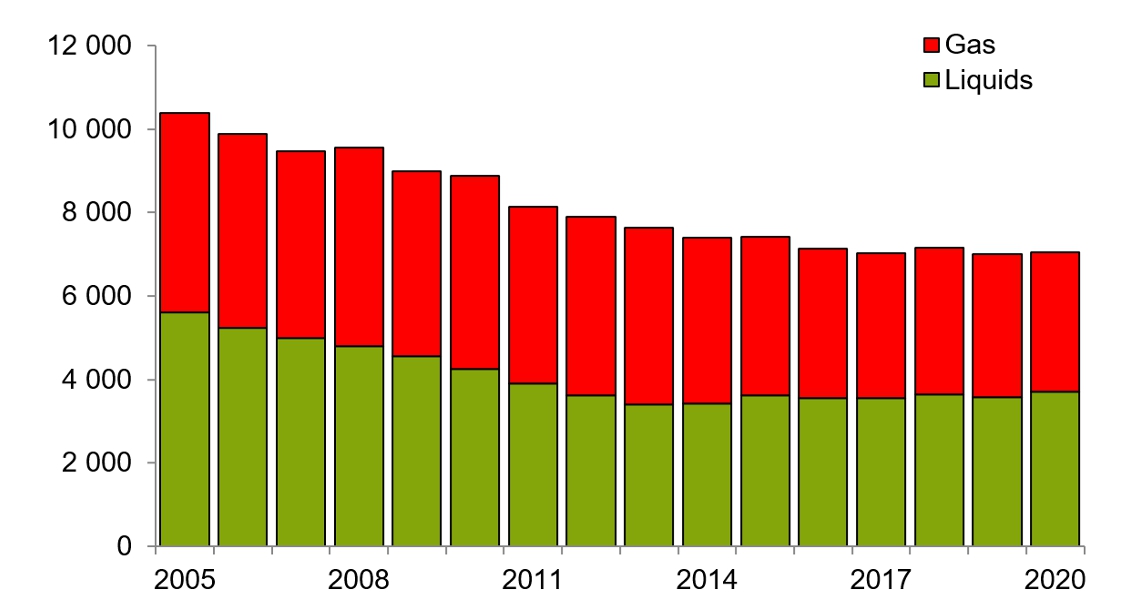Oil and gas production in Western Europe* was in decline from 2000 to 2014, with liquid production decreasing from 6.7 MMbopd to 3.4 MMbopd and gas dropping from 266 Bm3 to 230 Bm3. However, in 2015 liquid production increased by 200 Mbopd, the largest rise since 1996. This change in liquid production is due to a combination of things, including new project developments like Norway’s Gudrun and the UK’s Golden Eagle fields, the redevelopment of old producing fields such as Valhall and Ekofisk in the Norwegian North Sea, as well as less down time during the summer of 2015.
Gas, on the other hand, did not experience the same growth story, decreasing by 9.9 Bm3 during 2015. This reduction was driven by the continued decline of the Groningen field in the Netherlands but was partly offset by an increase in production from the Norwegian gas fields. Total production for the year increased by 11% in the UK and 6% in Norway, but decreased in the Netherlands.
In terms of exploration, 2015 was a disappointing year, with only 430 MMboe of new volumes discovered, compared to production of 2,700 MMboe, implying a 16% resource replacement ratio. The largest discoveries last year were the ENGIE-operated Dalzier and Chrysaor’s Mustard in the UK, and Norway’s Julius and Snefried North fields, both operated by Statoil. The 2015 exploration results follow the declining trend in discovered resources of the last four years.
The overall level of activity was affected by lower commodity prices in 2015. Total E&P spending for Western Europe fell 25% in 2015 compared to 2014, ending the year at US$78 billion. The drop was a result of lower maintenance activity, coupled with a reduction in the prices that oilfield service organisations were able to charge the E&P companies and the weaker Norwegian Krone. In 2016, spending is expected to fall another 10%, before gradually increasing in 2017.
Despite the reduction in short to medium term activity and the disappointing exploration results over the last year, Rystad Energy forecasts that liquid production from Western Europe will increase going forward due to the large projects that are currently being developed – quite an achievement considering the decline over the last 15 years. This does require a recovery in the oil price from the current low values, but 2015 has already shown that production from Western Europe is on its way back up.
(* Western Europe: Norway, UK, Netherlands, Denmark, Germany, France, Austria, Ireland)






